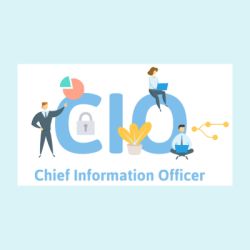Healthcare globally is moving towards connectivity centred around the patient, aiming to improve the overall patient experience. However, the existing IT infrastructure must first be optimised before a truly connected healthcare system can be implemented, according to an article published online by The Information Daily. This means simplifying the underlying IT infrastructure and integrating analytics solutions to pool information from disconnected systems.
The ability to integrate systems will greatly enhance communication between patients and care teams. Already, analytic monitoring sensors are able to trigger necessary alerts to warn hospital staff of a patient’s ailing health or provide personalised, data-driven health advice based on the patient's unique profile.
"The rise of the Internet of Things (IoT) has created new platforms on which healthcare devices and sensors are able to communicate with each other and with other machines, objects, environments and infrastructures," writes the author of the article, Trish Birch, Global Healthcare Consulting Practice Leader at Cognizant.
Connected technology can help improve quality of care by allowing patients to participate in their own healthcare management and decisions. By monitoring their own vital signs, for example, they become more involved with their treatment plans. Increased patient engagement will reduce incidents of medication not being taken and avoid hospital readmissions — which decrease healthcare costs.
See also: Virtual Tools Save Billions in Primary Care
To evaluate a patient’s health progress and spot irregularities, hospitals can now use blood pressure or glucose monitoring devices, wearables and mobile devices to collect vital health-related information. In addition, patients generate vast volumes of data with their smartphones, apps and web searches. When combined, these tell a crucial story of patients’ lifestyle, health habits and medication consumption.
"If patients make their health data voluntarily accessible to healthcare staff, the rich amounts of data in those profiles could serve as a basis for more informed diagnoses, better communication between medical staff and patients, higher likelihood of treatment compliance and overall improved health and fitness coaching," says Birch.
Indeed, these new technologies such as social, mobile, analytics, cloud (SMAC) and sensors play a big role in improving patient care. However, to create a truly connected healthcare system, Birch notes that providers must ensure the right infrastructure is in place to support analytics solutions and patient-centric technology — all with the support of and consent from the patient.
See also: Study: mHealth Apps Have Poor Data Privacy Protection
Source: The Information Daily
Image credit: Google Images
The ability to integrate systems will greatly enhance communication between patients and care teams. Already, analytic monitoring sensors are able to trigger necessary alerts to warn hospital staff of a patient’s ailing health or provide personalised, data-driven health advice based on the patient's unique profile.
"The rise of the Internet of Things (IoT) has created new platforms on which healthcare devices and sensors are able to communicate with each other and with other machines, objects, environments and infrastructures," writes the author of the article, Trish Birch, Global Healthcare Consulting Practice Leader at Cognizant.
Connected technology can help improve quality of care by allowing patients to participate in their own healthcare management and decisions. By monitoring their own vital signs, for example, they become more involved with their treatment plans. Increased patient engagement will reduce incidents of medication not being taken and avoid hospital readmissions — which decrease healthcare costs.
See also: Virtual Tools Save Billions in Primary Care
To evaluate a patient’s health progress and spot irregularities, hospitals can now use blood pressure or glucose monitoring devices, wearables and mobile devices to collect vital health-related information. In addition, patients generate vast volumes of data with their smartphones, apps and web searches. When combined, these tell a crucial story of patients’ lifestyle, health habits and medication consumption.
"If patients make their health data voluntarily accessible to healthcare staff, the rich amounts of data in those profiles could serve as a basis for more informed diagnoses, better communication between medical staff and patients, higher likelihood of treatment compliance and overall improved health and fitness coaching," says Birch.
Indeed, these new technologies such as social, mobile, analytics, cloud (SMAC) and sensors play a big role in improving patient care. However, to create a truly connected healthcare system, Birch notes that providers must ensure the right infrastructure is in place to support analytics solutions and patient-centric technology — all with the support of and consent from the patient.
See also: Study: mHealth Apps Have Poor Data Privacy Protection
Source: The Information Daily
Image credit: Google Images
Latest Articles
healthmanagement, technology, quality of care, apps, connected health, internet of things enabled devices
Healthcare globally is moving towards connectivity centred around the patient, aiming to improve the overall patient experience. However, the existing IT infrastructure must first be optimised before a truly connected healthcare system can be implemented.



























